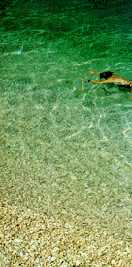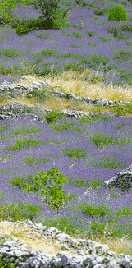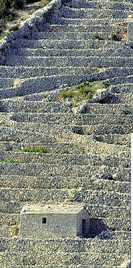|
|
![[ IMAGE: The little island
of Jabuka is of volcanic origin ]](../images/jabuka.jpg)
Croatia, a country with a thousand year old history, first appeared on the political
map of Europe in 1992. It covers an area of 56,538 sq. km, with 31,900 sq. km of
territorial waters. The coastline, including the islands, is 5,789 km long. According to
the 1991 census figures, 4.8 million people live there.
The capital is Zagreb, a city of Central European charm, celebrated the 900th
anniversary of the foundation of the Zagreb diocese, in 1994.
Croatia lies at the meeting point of the Mediterranean, the Alps and the Pannonian
plains. The characteristics of each have merged into a unique and charming harmony of
opposites. Although its main attraction is the Adriatic coast and islands, Croatia is full
of surprises and challenges, like the woods of Gorski Kotar, the mountainous region
between Northern Croatia and the Croatian coast close to the sea which attracts nature
lovers, mountaineers, hikers, winter sports fans and hunters. Then there is Lika, the
region separated from the sea by the huge mountain of Velebit. The Baroque castles and
thermal spas of Hrvatsko Zagorje, the region of Podravina, between the river Drava and the
wooded slopes of Bilogora, and the fertile plains of Slavonija - all this is Croatia.
In addition to its variety and natural beauty, another point in Croatia's favour is its
preserved environment. Croatia is undoubtedly one of the least saturated tourist centres
in the northern Mediterranean. Croatian regional planning has avoided the ecological
pitfalls of industrial and urban development. Today some 7.5% of Croatian territory is
protected within the national park system or under some other regional protection, and the
intention is to double this area, representing a remarkably valuable and environmentally
preserved asset in the very heart of Europe. Of the seven national parks, three are in the
mountains (Risnjak, Paklenica and Plitvica Lakes), and four are on the coast (Kornati,
Mljet, Brijuni and Krka). Of the latter four, all but the park of Krka are on islands.
Croatia is also one of the few European countries which can pride itself on its clean
environment and rich flora and fauna. About 4,300 plant species can be found in Croatia,
while in the Adriatic Sea there are about 400 edible fish, cephalopod, shrimp and
shellfish species.
Monuments which are part of world cultural and historical heritage have secured an
important place for Croatia in European culture. Most notable are the monument cities of
Dubrovnik and Split and the palace of Diocletian, the Euphrasius Basilica in Porec, the
theatre in Hvar and the Sibenik cathedral, among others.
The country has a long tradition of tourism. It was no accident that the Austrians and
Hungarians saw the benefits of the mild climate and beautiful landscape and began the
development of tourism in the Croatian south. The Viennese Society of Southern Railways
built the Kvarner Hotel in Opatija in 1884. Their aim was to turn it into an organised
seaside health resort. The Therapia Hotel in Crikvenica was built with Hungarian capital
in 1894 and three years later Austrian Lloyd opened the Imperial Hotel in Dubrovnik. And
so it has continued up to the present. The names of many Croatian tourist resorts have
been cited as favourite destinations by numerous tourists from Europe and further afield.
Croatia is really close to its neighbours. Munich is only 576 km from Zagreb, Vienna
only 371 km, Graz 188 km, and Trieste is just 126 km from Pula.
  
For details and you questions please contact as here

|
Real
Estate Nekretnine, Split,
Croatia tel:
+356 79010337
Terms and
Conditions | Privacy statement | info@nekretnine.org |
|